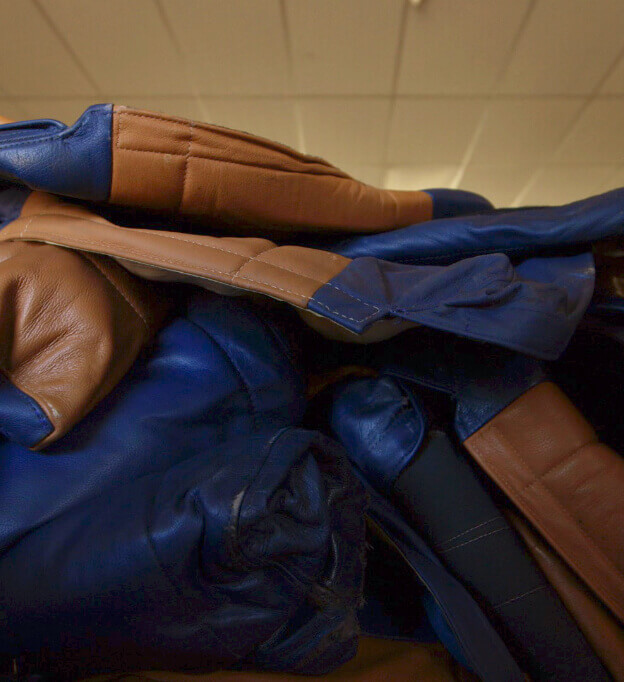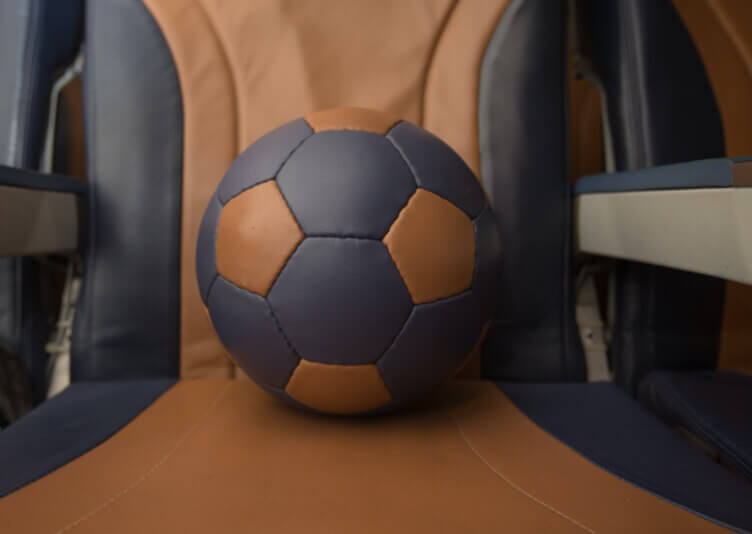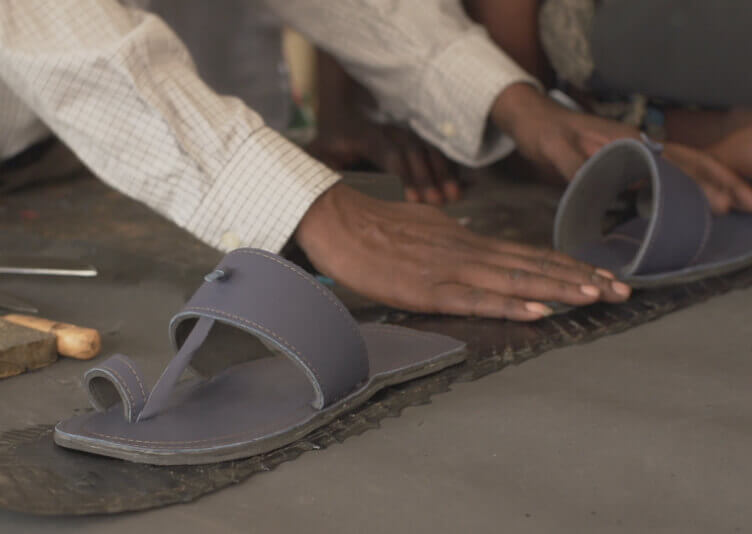
What to do with a mountain of used seat leather?
Something Old, Something New: The Southwest Repurpose with Purpose Program
The giant heaps of gently wrinkled leather could easily have been labeled “trash” and sent on their way.
What’s a sensible airline to do, after all, when it finds itself in possession of 43 acres of used leather? The conventional answer: Shred it. Burn it. Scrap it. Just get rid of the stuff—as cheaply and quickly as possible. That’s what’s done with discarded things, isn’t it? Once deemed unworthy, they are flung aside and forgotten.
Then again, conventional thinking has never been a hallmark of Southwest Airlines.
Southwest took an entirely different approach in 2014, as it worked on an ambitious retrofit of its interior cabins. The math had been checked and rechecked. By replacing its standard leather-wrapped airplane seats with a lighter option, the weight of its 737-700s and some of its 737-300s would be slashed by more than 600 pounds.
The financial benefits of the move were obvious. Lighter planes meant lower fuel consumption and lower fuel costs. Southwest was trying to think more sustainable by selecting carpeting made in part from recycled plastic bottles and replacing the existing leather seating with new E-leather seating, which was manufactured via processes that used electricity generated by renewable sources and water recycled in a closed loop.
The prospect of throwing perfectly serviceable leather into an incinerator or a landfill ran counter to the spirit of Southwest’s environmental sustainability efforts. It was already recycling items from electronics and scrap metal to plastic, paper, and cardboard.
From Southwest’s perspective, all that leftover leather still had plenty of life to give, especially if the airline could find partners capable of “upcycling” the leather into new products.
As then-Senior Manager Communications Marilee summed up in 2014, “We wanted to find organizations that would help us do social good.”
A former Southwest executive who had grown up in Kenya and had witnessed the poverty and joblessness there suggested the Company look toward that African nation. After contacting an organization called SOS Children’s Villages and some of its partners, Southwest found itself with an incredible list of potential uses for the leather.

Soccer balls were just one of the many things Southwest found could be made from its seat leather.
An organization called Maasai Treads could repurpose the leather into close-toed shoes for Kenyan children. Alive & Kicking Kenya could craft it into soccer balls to teach children through sports about HIV prevention and other health issues. And Life Beads Kenya could use it to teach critical vocational and social skills through its workshops.
With the enthusiastic support of Southwest Leadership, the Repurpose with Purpose program was devised and quickly launched. By making these leather donations, Southwest hoped to seed sustainable micro-industries capable of offering social and job creation opportunities for Kenyans who needed it most.

The leather from 500 seat covers can make nearly 2,000 pairs of sandals or shoes.
The results were nothing less than heart stirring. Inspiring stories from Kenya boomeranged back to Southwest. Kenyan children, whose bare feet were once targets for parasites and disease, now marched proudly off to school in new leather sandals or shoes. And program participants—some orphans, others previously drawn to crime—spoke glowingly about the occupational opportunities leatherwork afforded them.
As Silvia, a local project coordinator, said, “This donation from Southwest Airlines is really unique—and very different from other airlines donations—because this project is very sustainable.”
The symbolism of the initiative was not lost on anyone involved. Forgotten leather scraps had managed, in a small way, to boost the confidence of forgotten individuals and communities within Kenya. The Repurpose with Purpose program wasn’t just about upcycling items, it was about changing lives.
It would have been easy to end the project there. A good deed had been artfully and efficiently done. Time to turn the page and move onto the next project.
Only Southwest—holding firm to the idea that environmental sustainability efforts never end, only evolve—didn’t just move on. It kept listening, searching, scouring for additional upcycling Partnerships, both in the United States and outside its borders.
In 2017, Southwest announced an expansion of its Repurpose with Purpose program, pledging the donation of 675,000 pounds of seat covers and other discarded materials.
This new set of donations took many forms. For example, organizations like Rethreaded upcycled the leather into stunning jewelry and accessories. And the Arise Veteran Foundation and Dallas Designing Dreams used the donated leather to bolster skill-building programs for an array of in-need communities, including youths, veterans, senior citizens, Human Trafficking survivors, and the disabled.
Thus, the stitchwork continued, breathing new life into old materials and once-broken spirits. As one participant from the Arise Veteran Foundation so aptly put it, “It really gives me something to look forward to, a reason to live, I guess. And I’m looking forward to what’s coming next.”
